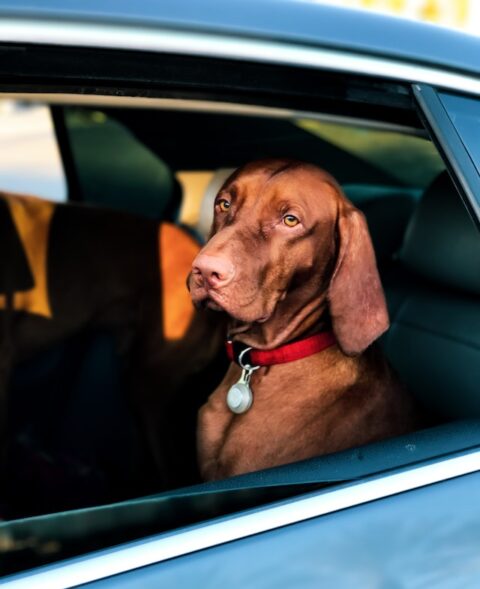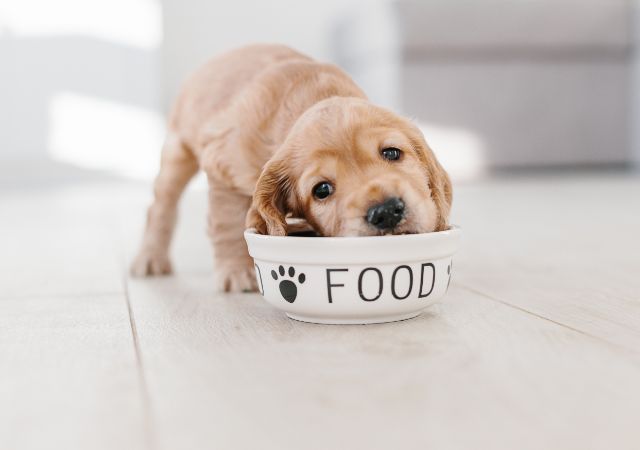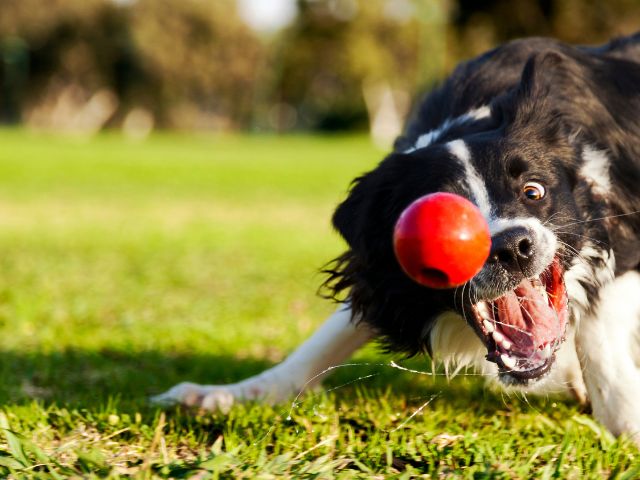Travelling is one of life’s great pleasures, and it’s even better when you can share the experience with your furry companion.
This guide aims to equip Australian dog owners with all the essential knowledge and tips for ensuring a safe and enjoyable journey for both you and your dog.

Introduction
In this introductory section, we set the stage for why travelling safely with your dog is crucial and how rewarding the experience can be when done correctly.
Why Traveling with Your Dog is a Rewarding Experience
Many people consider their dogs to be part of the family, so it only makes sense to include them in family outings and vacations.
Sharing new experiences and adventures with your dog not only strengthens your bond but also provides mental and physical stimulation for your pet.
Imagine the joy of exploring a new hiking trail or beach with your four-legged companion by your side.
Importance of Safety While Traveling with Pets
However, taking your pet along comes with its set of responsibilities. Ensuring your dog’s safety is paramount.
From abiding by transportation guidelines to understanding your dog’s travel needs, there are many aspects to consider.
This guide provides an exhaustive list of safety measures and preparations to help you navigate through it all.

Understanding Your Dog’s Travel Needs
Before embarking on your journey, it’s essential to understand the unique travel needs of your canine companion.
In this section, we delve into how different breeds respond to travel and discuss age and health considerations.
Dog Breeds and Their Comfort Levels in Travel
Not all dogs are created equal when it comes to comfort and adaptability in travel situations.
While some breeds like Labradors and Border Collies are more adaptable to new experiences, others such as Bulldogs or older dogs may find travelling stressful.
Understanding the characteristics and limitations of your dog’s breed will help you plan a more comfortable trip for both of you.
Age and Health Considerations
The age and health of your dog can significantly affect how well they cope with travel. Young puppies and elderly dogs may find the ordeal more stressful and are often more susceptible to travel-related illnesses.
Always consult your veterinarian before planning any trips, especially if your dog has ongoing health issues or is advanced in age.

Legal Requirements and Regulations in Australia
Being informed about legal requirements is crucial for a hassle-free travel experience with your pet.
In this section, we will discuss the essential documents you’ll need and specific state and international regulations you should be aware of.
Documentation for Pet Travel
When travelling within Australia or internationally, you must adhere to specific documentation requirements.
Generally, you will need your dog’s vaccination records, a pet passport, and, sometimes, an export permit. Keep digital and physical copies of all relevant paperwork to ensure a hassle-free experience.
State and Territory-Specific Laws
Each state or territory in Australia may have specific laws and regulations related to pet travel.
Whether it’s leash laws or restrictions on breeds, being aware of these rules will help you prepare better and avoid any unpleasant situations.
International Travel Regulations
If you plan to travel internationally with your dog, be prepared to meet additional requirements.
These may include rabies vaccination, a microchip compliant with international standards, and even a waiting period after vaccination. Always check the regulations specific to the country you are visiting.
Pre-Travel Veterinary Check-up
Before you head out, a trip to the vet is essential for determining whether your dog is fit for travel. This section provides an overview of what to expect from your veterinary visit and why it’s crucial.

What to Expect in a Veterinary Visit
A comprehensive veterinary check-up before your trip is essential to assess your dog’s fitness for travel.
Your vet will likely check for any underlying health conditions, ensure that all vaccinations are up to date, and might also provide recommendations tailored to your travel plans.
Vaccination and Microchipping
Ensure your dog’s vaccinations are up-to-date, especially if you’re travelling to areas where specific illnesses are prevalent.
Microchipping is not just a legal requirement but also a safety net in case your pet gets lost. Make sure the microchip details are current, including your contact information.
Health Certificates and Travel Fitness
For some types of travel, especially air travel, you may require a health certificate from your vet. This document certifies that your dog is healthy and fit for travel.
Always check the specific requirements for each mode of transportation and destination.
Transportation Modes
The way you choose to travel with your dog will significantly influence their comfort and safety. This section will cover various options, from car journeys to air travel, and even public transport.
Car Travel
Many dog owners prefer car travel because it offers greater control over their pet’s environment. However, it comes with its own set of safety concerns, which we will delve into below.
Seat Belts and Carriers
Just like humans, dogs also need to be securely fastened while travelling in a car. Doggy seat belts, travel crates, and car barriers are useful for this.
These not only keep your dog safe but also prevent them from distracting the driver.
Rest Stops and Hydration
Long car journeys can be taxing on your dog. Schedule frequent rest stops for bathroom breaks, hydration, and a bit of exercise.
Always keep a water bowl and fresh water handy to keep your dog hydrated.

Plane Travel
Flying is the quickest way to cover large distances, but it can be particularly stressful for dogs. Below, we look at ways to minimize this stress.
In-Cabin vs. Cargo: Pros and Cons
Air travel with pets can be a complex affair. Some airlines allow smaller dogs in the cabin, while larger dogs must travel in the cargo hold.
Each option has its pros and cons, such as cost, safety, and comfort levels, which need to be thoroughly considered.
Airline Policies and Fees
Every airline has its policy concerning pet travel. This often includes specifications for carriers, fees, and even breed restrictions. Always read the fine print and call the airline for clarification if needed.
Public Transport
Public transportation options can be limited for dog owners, but they are not entirely out of the question. In this part, we will cover what you should know.

Trains and Buses
In Australia, each state has different regulations about taking pets on public transport. While some trains and buses allow pets, they often have specific requirements like muzzles or leashes.
Always check the rules beforehand to ensure a smooth journey.
Ferries and Other Water Vessels
If your travel plans involve taking a ferry or other water vessels, research the pet policy in advance.
While some ferries offer pet-friendly cabins, others may require pets to remain in vehicles or specific holding areas.
Packing Essentials
Packing for your pet involves more than just throwing in a bag of kibble and their favourite toy. This section aims to guide you through the essentials, ensuring that you leave nothing important behind.
Food and Water
Always pack more than enough food and water for your dog. Changing their diet suddenly can lead to digestive issues, so stick with the food they are accustomed to.
Portable dog bowls and water bottles designed for dogs can make feeding and hydrating on the go easier.
First Aid Kit
Always carry a basic pet first aid kit, which should include bandages, antiseptics, tweezers, and any medication your dog may need.
It’s better to be prepared for any minor injuries or ailments that could occur while travelling.
Toys and Comfort Items
Bringing along your dog’s favourite toy or blanket can help them feel more at ease in unfamiliar settings. These comfort items can go a long way in reducing your dog’s stress levels during travel.

Trip Preparation and Acclimation
Preparation doesn’t end with packing. In this section, we talk about how to prepare your dog mentally for the trip, which is just as crucial for their comfort and safety.
Training Your Dog for Travel
If your dog is not used to travelling, consider doing a few trial runs before the actual trip. Start with shorter journeys and gradually increase the distance.
This acclimates your dog to the experience and allows you to identify any issues in a controlled environment.
Creating a Safe and Familiar Environment
Creating a familiar environment can ease the stress of travel for your dog. Use familiar blankets and toys, plus you can even play soft music that your dog is accustomed to.
These familiar elements can help keep your dog calm during the trip.
During the Trip
The journey has finally begun, and your preparation is about to pay off. In this section, we look at how to ensure your dog remains safe and comfortable throughout the trip.
Monitoring Your Dog’s Health
Constantly monitor your dog’s behaviour and health during the trip. Look out for signs of stress, discomfort, or illness, and be prepared to make stops if necessary.
It’s better to be overly cautious than to risk your dog’s well-being.
Feeding and Exercise Schedules
Try to stick as closely as possible to your dog’s regular feeding and exercise schedules. Consistency will help reduce stress and avoid digestive issues.
If changes are unavoidable, make them gradually to give your dog time to adjust.

Accommodations
Finding the right place to stay is crucial for an enjoyable trip. Here, we look at what to consider when choosing accommodations and how to make your dog’s stay as comfortable as possible.
Pet-Friendly Hotels and Lodges
Always confirm that your accommodation is pet-friendly. Many places offer special amenities for dogs, like dog beds or dog-walking services.
A quick online search or a call to the accommodation can give you all the details you need.
Camping with Your Dog
If you’re considering camping, always choose dog-friendly sites and ensure you adhere to the campsite’s pet policies. Keep your dog on a leash when not in a secured area and always clean up after them.

Safety and Etiquette
Ensuring the safety of your dog and others during your trip involves adhering to common-sense rules and etiquette. In this section, we discuss the basics that every pet owner should know and follow.
Public Spaces and Dog Etiquette
Always be mindful of your surroundings and other people when travelling with your dog. Follow all posted rules, keep your dog on a leash, and never leave them unattended.
Proper dog etiquette ensures a pleasant experience for everyone involved.
Emergencies and Contingencies
Be prepared for emergencies by keeping a list of veterinary hospitals in the area you’re travelling to. Have a contingency plan in case your travel arrangements change suddenly.
The more prepared you are, the easier it will be to handle unexpected situations.
Conclusion
We’re wrapping up this comprehensive guide with a summary of key points and additional resources for further reading.
We hope this guide has been helpful for all Australian dog owners looking to travel safely with their pets.
Summary of Key Points
Travelling with your dog can be a fulfilling experience, but it requires meticulous planning and a focus on safety.
From understanding your dog’s unique travel needs to adhering to Australian and international travel laws, there are various aspects to consider. Preparation and awareness are the keys to a successful trip.











